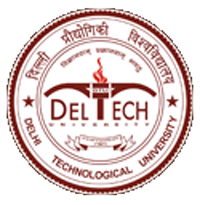Please use this identifier to cite or link to this item:
http://dspace.dtu.ac.in:8080/jspui/handle/repository/21621Full metadata record
| DC Field | Value | Language |
|---|---|---|
| dc.contributor.author | TIWARI, ANJALI | - |
| dc.date.accessioned | 2025-06-07T05:52:10Z | - |
| dc.date.available | 2025-06-07T05:52:10Z | - |
| dc.date.issued | 2025-06 | - |
| dc.identifier.uri | http://dspace.dtu.ac.in:8080/jspui/handle/repository/21621 | - |
| dc.description.abstract | Cryptococcus neoformans, an encapsulated basidiomycetous yeast, is a clinically significant opportunistic fungal pathogen responsible for cryptococcosis—a disseminated, often fatal systemic mycosis primarily affecting individuals with weaker immune defences, such as people with HIV/AIDS infections or recipients of immunosuppressive regimens. Despite the readily available antifungal agents, the current remedial arsenal is increasingly compromised by escalating resistance, limited target specificity, adverse host toxicity, and poor pharmacokinetic profiles. These limitations underscore an urgent demand for novel antifungal strategies that are both selective and mechanistically innovative. In this context, the intein embedded within the highly conserved Prp8 protein of the spliceosome represents a compelling molecular target. The Prp8 intein is a self-catalysing protein segment that undergoes autocatalytic protein splicing, a process crucial for the functional maturation of Prp8. Notably, inteins are evolutionarily restricted to unicellular microorganisms and are entirely absent in metazoan proteomes, making them ideal candidates for selective antifungal intervention with minimal risk of off-target effects in human hosts. This study undertakes a structure-based virtual screening approach targeting the C. neoformans Prp8 intein, utilizing its crystallographically resolved structure (PDB ID: 6MX6). A panel of ten phytochemicals, selected based on their redox activity, electrophilic functional groups, and established pharmacological safety, were computationally screened for their potential to inhibit intein splicing. The synthetic intein inhibitor 6G-319S was employed as a reference control to benchmark binding performance. Among the screened natural compounds, curcumin exhibited the highest binding affinity value (−8.7 kcal/mol), outperforming the chosen reference inhibitor (−7.9 kcal/mol), and formed stable interactions with catalytically critical residues such as Cys1 and Asn198, essential for the splicing mechanism. Other top-performing phytochemicals, including Withaferin A, Epigallocatechin gallate (EGCG), and Tinosporaside, demonstrated substantial binding affinities and engaged in strategic interactions with residues constituting the intein's catalytic core and conserved β-strands, suggesting their potential as allosteric or competitive inhibitors of intein activity. The present findings substantiate the therapeutic promise of intein-targeted antifungal strategies and demonstrate the efficacy of phytocompound scaffolds as viable chemical entities for modulating microbial-specific post-translational processes. By harnessing the evolutionary vi exclusivity of inteins and the structural diversity inherent to plant-derived compounds, this approach introduces a novel, host-sparing, resistance-evading therapeutic paradigm for combating invasive fungal diseases. These insights may lead to the rational advancements in next-generation antifungal agents targeting cryptic molecular mechanisms unique to pathogenic fungi. | en_US |
| dc.language.iso | en | en_US |
| dc.relation.ispartofseries | TD-7887; | - |
| dc.subject | CRYPTOCOCCUS NEOFORMANS | en_US |
| dc.subject | PRP8 INTEIN | en_US |
| dc.subject | INTEIN SPLICING | en_US |
| dc.subject | VIRTUAL SCREENING | en_US |
| dc.subject | ANTIFUNGAL RESISTANCE | en_US |
| dc.subject | POST-TRANSLATIONAL MODIFICATION | en_US |
| dc.subject | FUNGAL PATHOGENESIS | en_US |
| dc.subject | TRUCTURE-BASED DRUG | en_US |
| dc.subject | PHYTOCHEMICALS | en_US |
| dc.subject | S DESIGN | en_US |
| dc.title | STRUCTURE-BASED IN-SILICO IDENTIFICATION OF PLANT-DERIVED INHIBITORS TARGETING PRP8 INTEIN SPLICING IN CRYPTOCOCCUS NEOFORMANS: A PHYTOCHEMICAL DERIVED REMEDY FOR ANTIMYCOTIC DRUG RESISTANCE | en_US |
| dc.type | Thesis | en_US |
| Appears in Collections: | M Sc | |
Files in This Item:
| File | Description | Size | Format | |
|---|---|---|---|---|
| ANJALI TIWARI M.Sc..pdf | 2.88 MB | Adobe PDF | View/Open |
Items in DSpace are protected by copyright, with all rights reserved, unless otherwise indicated.



